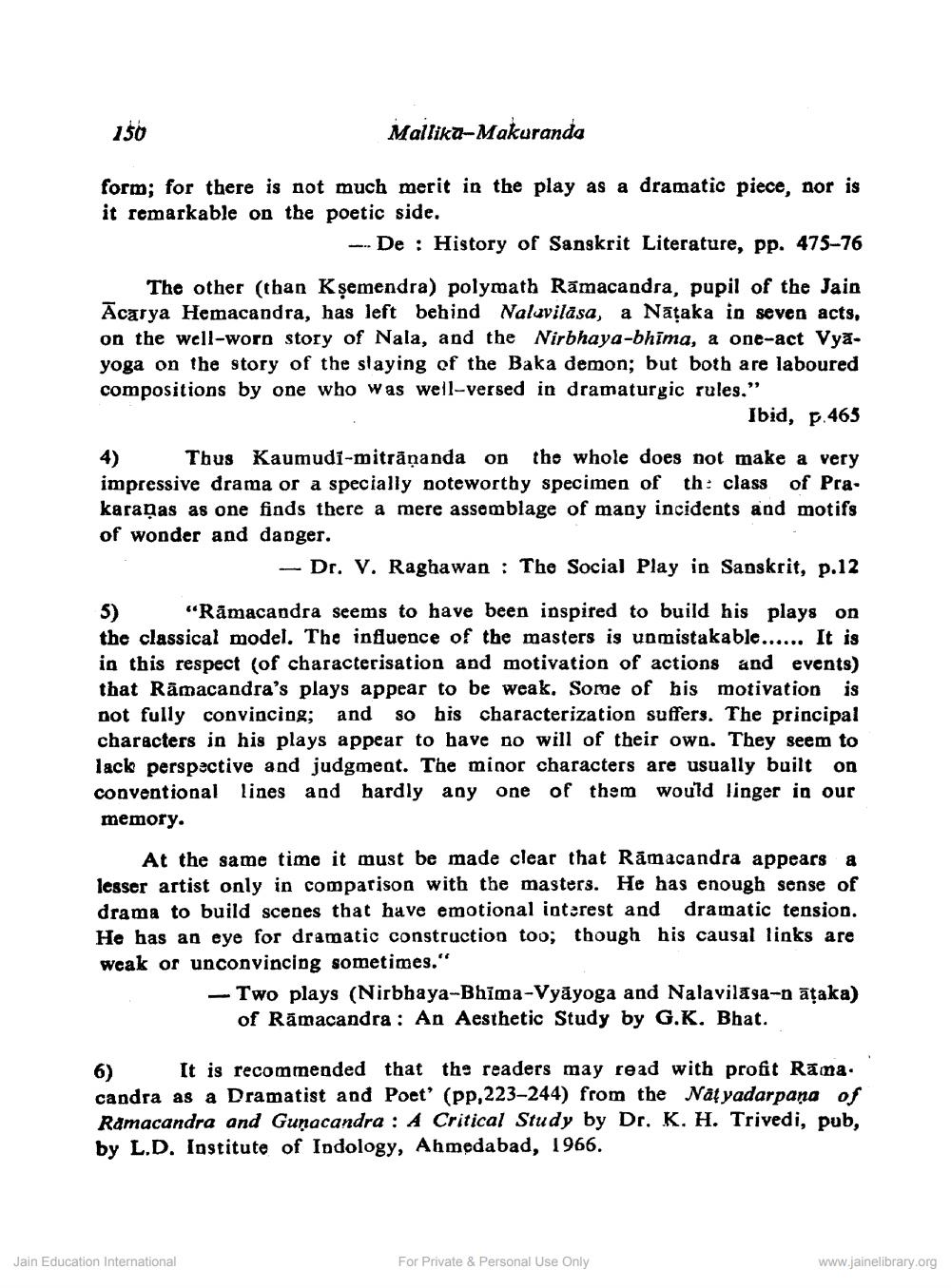________________
Mallika-Makaranda
form; for there is not much merit in the play as a dramatic piece, nor is it remarkable on the poetic side.
-De
150
History of Sanskrit Literature, pp. 475-76
The other (than Kşemendra) polymath Ramacandra, pupil of the Jain Acarya Hemacandra, has left behind Nalaviläsa, a Nataka in seven acts, on the well-worn story of Nala, and the Nirbhaya-bhima, a one-act Vyayoga on the story of the slaying of the Baka demon; but both are laboured compositions by one who was well-versed in dramaturgic rules."
Ibid, p.465
4) Thus Kaumudi-mitrāṇanda on the whole does not make a very impressive drama or a specially noteworthy specimen of th: class of Prakaraṇas as one finds there a mere assemblage of many incidents and motifs of wonder and danger.
- Dr. V. Raghawan: The Social Play in Sanskrit, p.12
5)
"Ramacandra seems to have been inspired to build his plays on the classical model. The influence of the masters is unmistakable...... It is in this respect (of characterisation and motivation of actions and events) that Ramacandra's plays appear to be weak. Some of his motivation is not fully convincing; and so his characterization suffers. The principal characters in his plays appear to have no will of their own. They seem to lack perspective and judgment. The minor characters are usually built conventional lines and hardly any one of them would linger in our
memory.
At the same time it must be made clear that Ramacandra appears a lesser artist only in comparison with the masters. He has enough sense of drama to build scenes that have emotional interest and dramatic tension. He has an eye for dramatic construction too; though his causal links are weak or unconvincing sometimes."
-Two plays (Nirbhaya-Bhima-Vyayoga and Nalavilasa-n ataka) of Ramacandra: An Aesthetic Study by G.K. Bhat.
6) It is recommended that the readers may read with profit Rama. candra as a Dramatist and Poet' (pp,223-244) from the Natyadarpana of Ramacandra and Gunacandra: A Critical Study by Dr. K. H. Trivedi, pub, by L.D. Institute of Indology, Ahmedabad, 1966.
Jain Education International
For Private & Personal Use Only
www.jainelibrary.org




